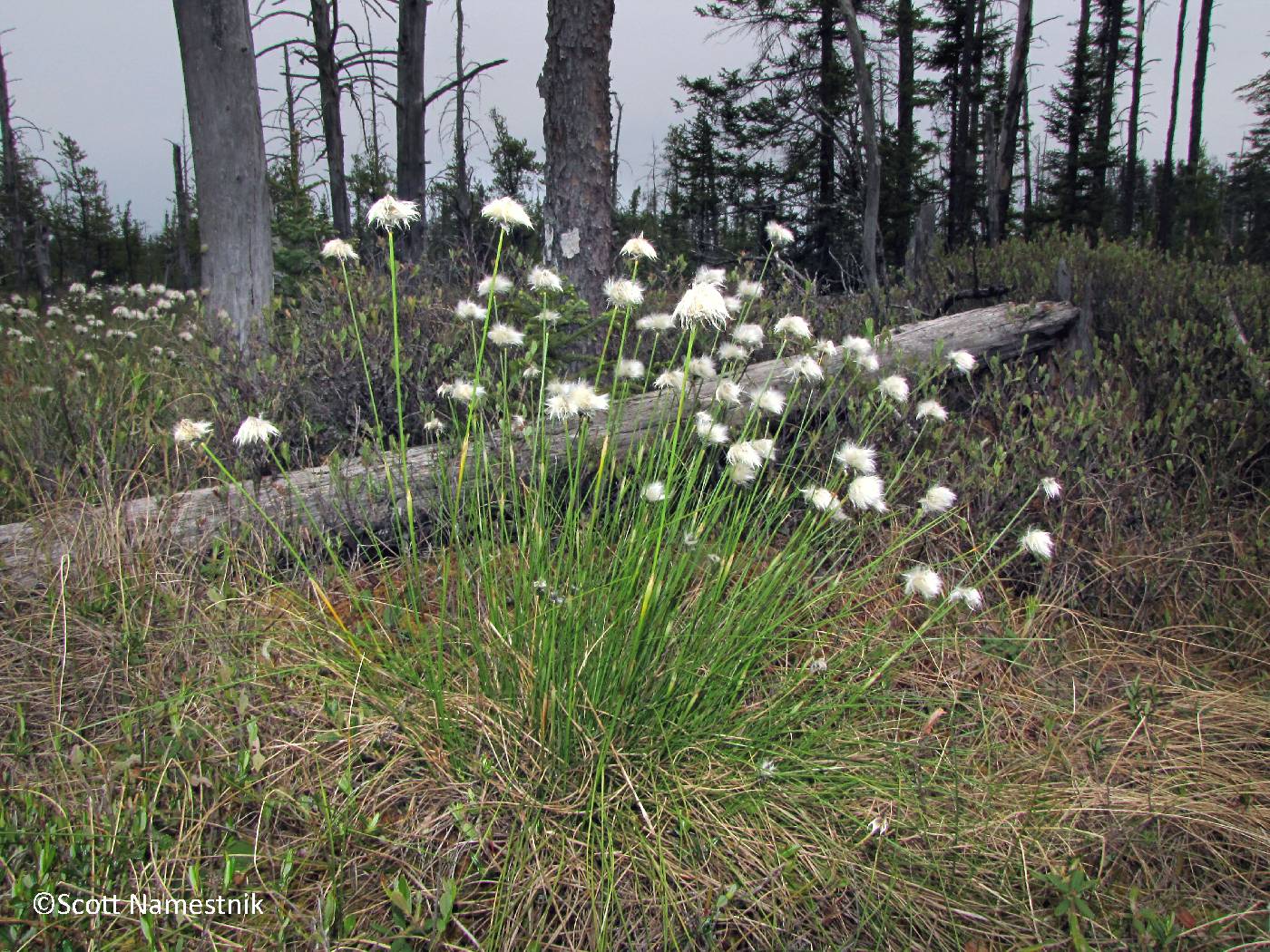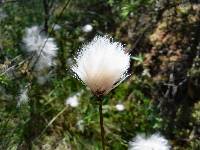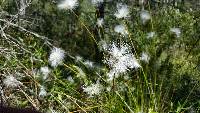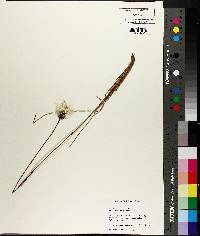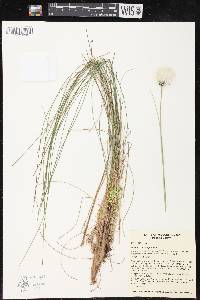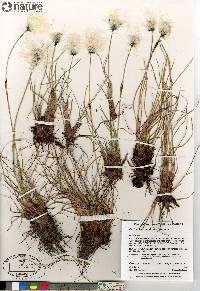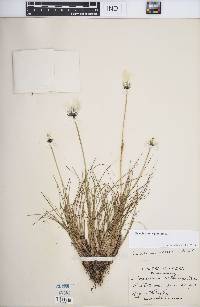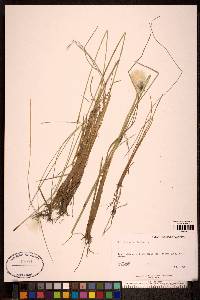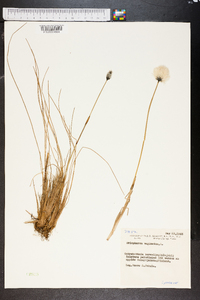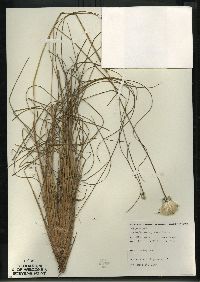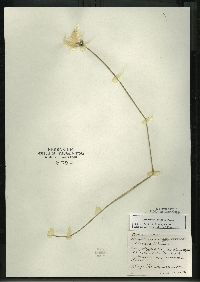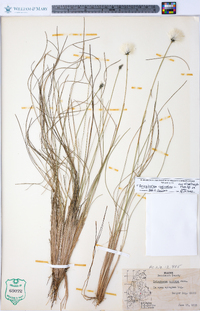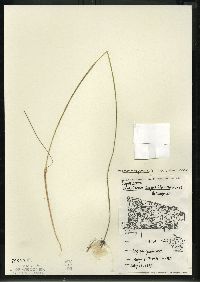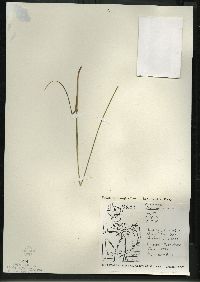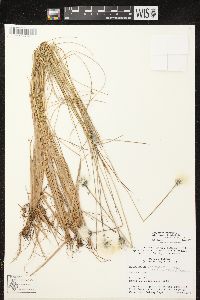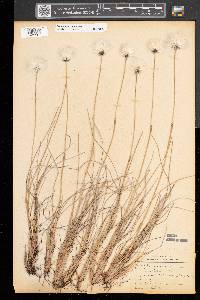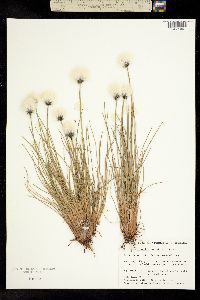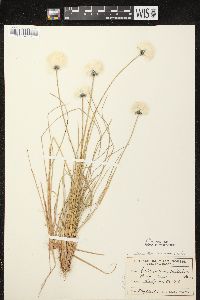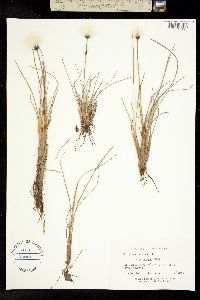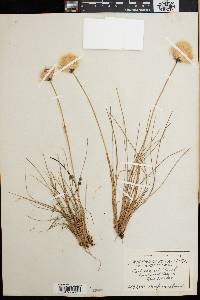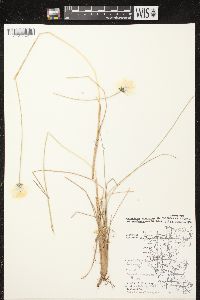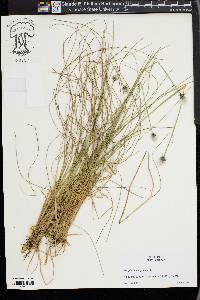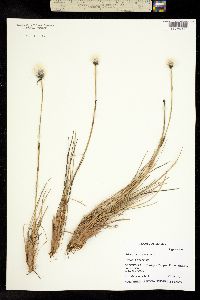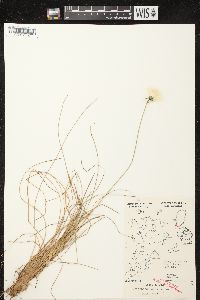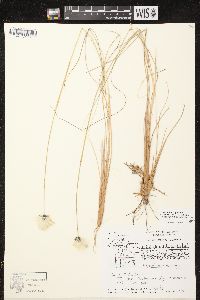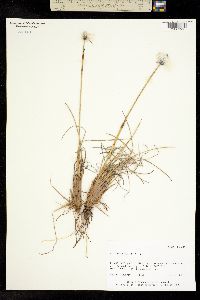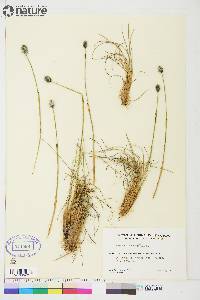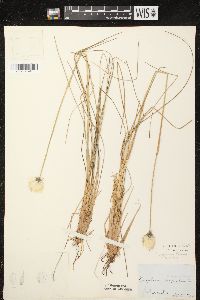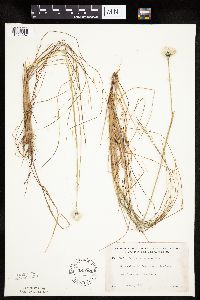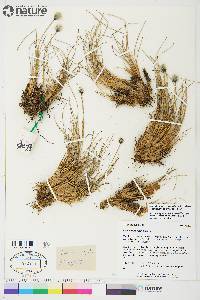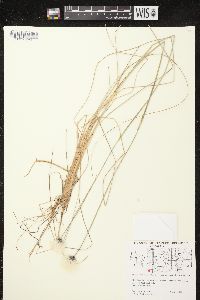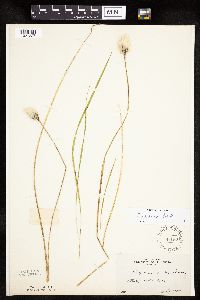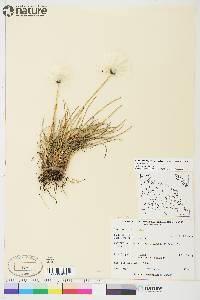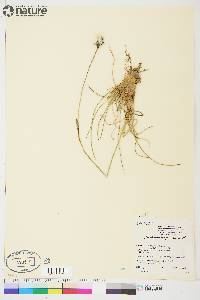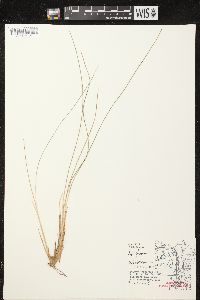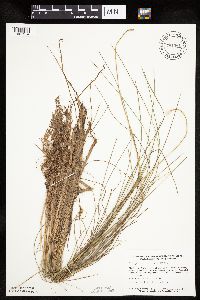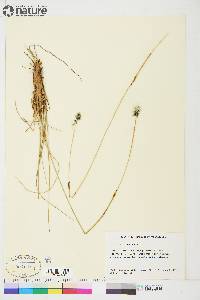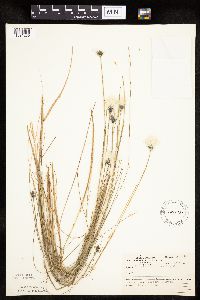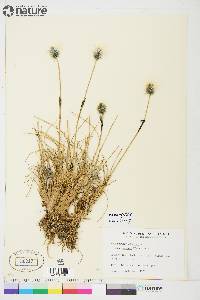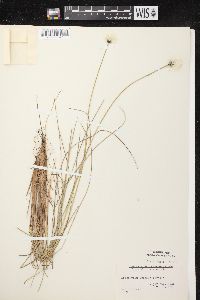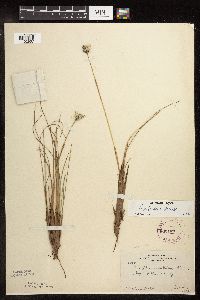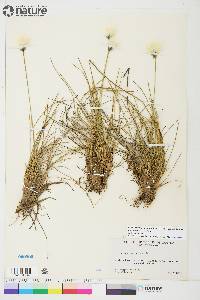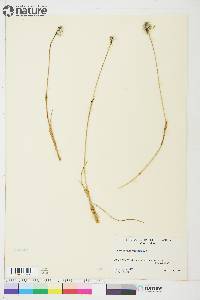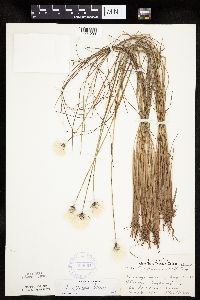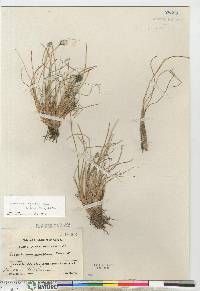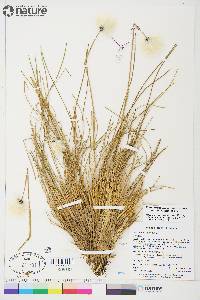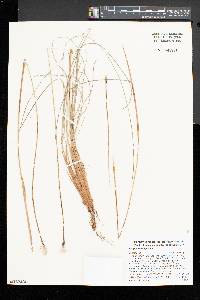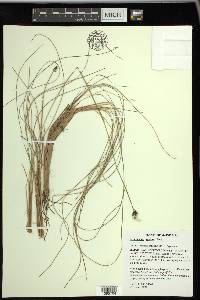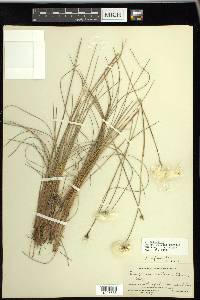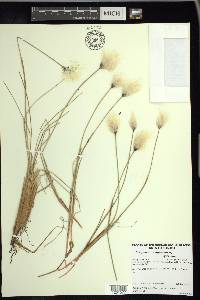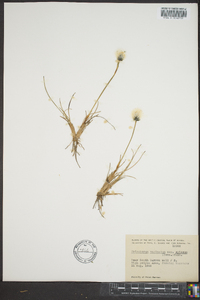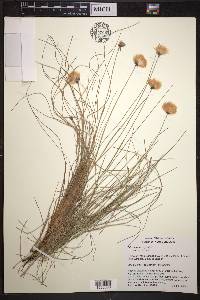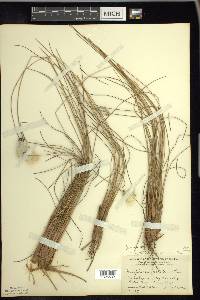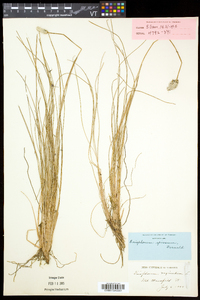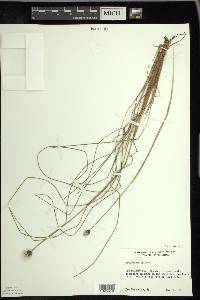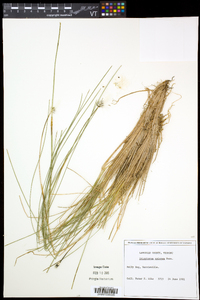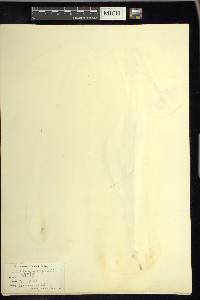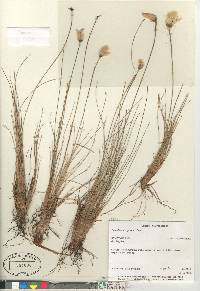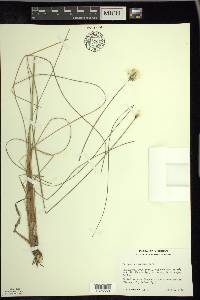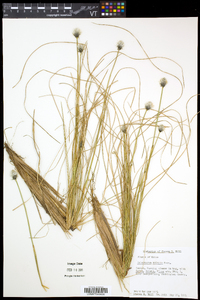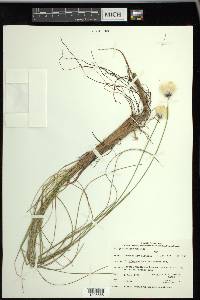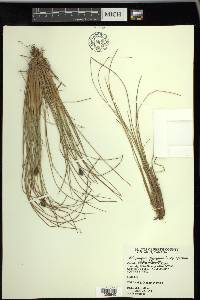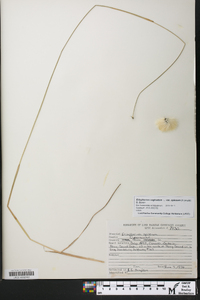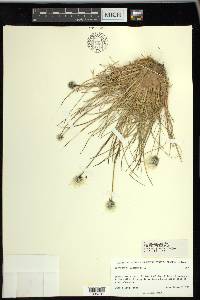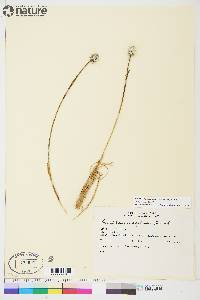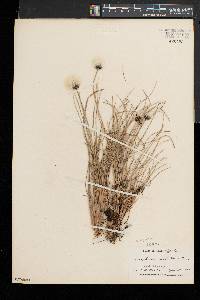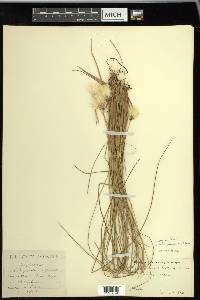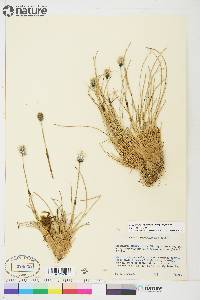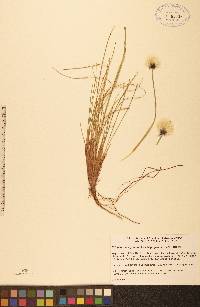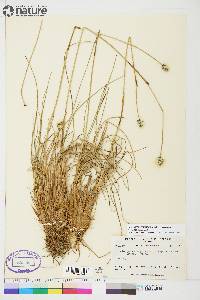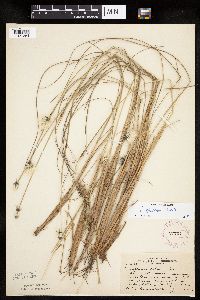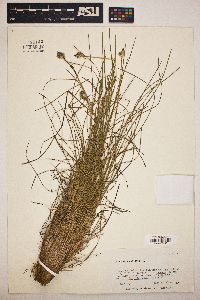
|
|
|
|
Family: Cyperaceae
Tussock Cotton-Grass
[Eriophorum callithrix Lange, moreEriophorum callitrix var. erubescens Fernald] |
Plants cespitose, tussock forming. Culms 10-60 cm; basal sheaths brown. Leaves: bladeless sheaths 1-3 per culm, expanding distally, to 1 mm wide; blades filiform, trigonous, not more than 1 cm. Inflorescences: involucral bracts absent. Spikelets solitary, erect, globose-subglobose to ovoid-oblong, 10-20 mm in flower, to 50 mm in fruit; scales lead-colored to greenish gray with white-hyaline margins to 1 mm wide; empty scales more than 10, ovate-lanceolate; proximal scales reflexed or spreading at maturity, 5-10 mm. Flowers: perianth bristles 10 or more, white, seldom reddish or brown, 10-18 mm, smooth; anthers 1-3 mm. Achenes ovoid to obovoid, 1.9-3.5 mm, apex minutely apiculate. 2n = 58, 60. Fruiting summer. Bogs, meadows, swales, tundra, wet places, peaty soils; 0-500 m; Greenland; Alta., B.C., Man., N.B., Nfld. and Labr., N.W.T., N.S., Nunavut, Ont., Que., Sask., Yukon; Alaska, Conn., Ind., Maine, Mass., Mich., Minn., N.H., N.J., N.Y., Pa., R.I., Vt., Wis.; Eurasia. Eriophorum vaginatum is variable; many authorities divide it into two subspecies, E. vaginatum subsp. vaginatum and E. vaginatum subsp. spissum (Fernald) Hultén, differing in spikelet shape, scale color, and anther size. The remarkable degree of morphologic overlap and the limited number of consistent characters that can be used to delimit the subspecies has been problematic and controversial. Many intermediates between the essentially sympatric subspecies occur, especially in the center of the range of the species. In the absence of definitive data only one taxon is recognized.
Perennial herb with rhizomes, densely tufted 10 cm - 0.7 m tall Leaves: basal, to 1 cm long and 1 mm wide, thread-like, three-angled, with a sheathing base that encloses the stem. Bladeless sheaths one to three per culm, expanding near the tip, to 1 mm wide, mostly growing below the middle of the culm. Flowers: minute, subtended by a floral scale, lacking sepals and petals, bearing numerous hair-like bristles that form a dense, cottony tuft when the spikelet reaches maturity. Bristles persistent, white (rarely reddish or brown), more or less straight, elongated, 1 - 2 cm long, much longer than the achene. Stamens exserted. Anthers 1 - 3 mm long. Pistil one. Style three-cleft. Fruit: a one-seeded achene, 2 - 3.5 mm long, slightly more than half as long as wide, egg-shaped or reverse egg-shaped with a tiny point at the apex, three-angled. Seed with a thin, non-adherent wall. Culm: 10 cm - 0.7 m long, solid, with brown basal sheaths. Spikelets: solitary, upright, 1 - 2 cm long in flower, to 5 cm long in fruit, nearly spherical to spherical to oblong egg-shaped. Floral scales spirally arranged, grayish to greenish gray with whitish margins. The lower scales sterile, ten to fifteen, blackish with whitish margins, 0.5 - 1 cm long, narrowly egg-shaped with a long-pointed tip, becoming reflexed or spreading at maturity. Similar species: The distinguishing characteristic of this species is its solitary spikelets. The other Eriophorum species of the region bear spikelets in groups of two or more. Habitat and ecology: Rare in the Chicago Region. Found in bogs. Occurence in the Chicago region: native Etymology: Eriophorum means "bearing cotton," from the Greek words erion (cotton or wool) and phoros (bearing). Vaginatum means "with a sheath." Author: The Morton Arboretum Very densely cespitose, forming large tussocks; stems 2-7 dm; lvs clustered at base, with filiform blade 1 mm wide; 1 or 2 dilated, bladeless sheaths mostly below
the middle of the stem; spike solitary; basal sterile scales 10-15, lance-ovate, blackish, long-acuminate, with white or pale margins, spreading or reflexed at maturity; bristles white or seldom brownish or reddish; anthers 2-3 mm; achene distinctly obovate, 2.5-3.5 mm, slightly over half as wide, minutely (0.1-0.2 mm) apiculate; 2n=58, 60. Bogs and open conifer-swamps; circumboreal, s. to N.J., Pa., and n. Ind., and Alta. Fr Apr.-July. (E. callithrix, misapplied) Our plants are var. spissum (Fernald) B. Boivin. (E. spissum) Gleason, Henry A. & Cronquist, Arthur J. 1991. Manual of vascular plants of northeastern United States and adjacent Canada. lxxv + 910 pp. ©The New York Botanical Garden. All rights reserved. Used by permission. From Flora of Indiana (1940) by Charles C. Deam Our specimens were found in tamarack bogs. ...... Indiana Coefficient of Conservatism: C = 10 Wetland Indicator Status: OBL |
This project was made possible in part by the Institute of Museum and Library Services [MG-70-19-0057-19].
Powered by Symbiota

